Journal Articles by Jayne Osgood

Gender Un/bound: Traversing Educational Possibilities, 2024
Through a series of tentacular provocations this chapter contemplates how gender might be reimagi... more Through a series of tentacular provocations this chapter contemplates how gender might be reimagined from child-snail relationalities. Further, it invites attunement to how else gender coalesces through a young child's non-verbal, not-quite-literate, bodily encounters with the everyday. Whilst dominant ideas about how children are and become in the world tend to be framed by linear, anthropocentric logic characterised by certainty and knowability, how might odd-kin relationalities (Haraway, 2016) complicate such logic and open possibilities for gender to e/merge in surprising ways? Tracing the slime trails of a four-year-old child's encounters with snails, this chapter wonders whether making-odd-kin might hold the potential to dwell upon often unnoticed and unappreciated capacities for deep immersion in now-time, and with that a persistent refusal to be contained and bound by normative ideas about what it is to be(come) gendered. Making odd-kin refuses the limits, codifications and meanings about gender and childhood that are imposed by adults on the developing child bodymind. Ultimately, with the help of Haraway's SF praxis, this chapter explores the capacious possibilities inherent in being open to un/re-learning how to be in the worldalways in relation.

Editorial: Pedagogy, Culture & Society Special Issue, 2024
Familiarity with ‘the pioneers’ of early childhood is deemed essential knowledge for anyone seeki... more Familiarity with ‘the pioneers’ of early childhood is deemed essential knowledge for anyone seeking to understand how contemporary conceptualisations of child/hood have come about, how children are positioned in relation to adults, and how ideas circulate about the ways children behave, learn, interact and find their place in the world. We place ‘(the) pioneer(s)’ in inverted commas precisely because the concept of pioneering is contested and deeply problematic. This Special Issue is committed to critically considering precisely what ‘pioneer’ means in the context of early childhood. Inspired by Snaza’s (2013) proposition to bewilder ‘the pioneers’, this Special Issue pursues ideas about early childhood that are not shaped by, and founded upon Western imaginaries of child/hood/s. Bewildering is a concept and practice that actively disrupts the colonial connotations and implications of ‘the pioneer’, as a civilizing force heading into the wilderness, to prepare the way for the production of certain sorts of humans.

Gender & Education, 2024
In this paper we dwell amongst what was agitated from enacting Neimanis' (2012) hydrofeminism in ... more In this paper we dwell amongst what was agitated from enacting Neimanis' (2012) hydrofeminism in an 'aqueous-body-writing-reading' experiment that unfolded in discrete but entangled locations (London and Cape Town) to actively disrupt and reformulate ideas about what it is to do scholarly work. We consider how we might dislodge Anthropocentric ways of knowing, being and doing through our swimming-writing-reading. Aligned with emergent hydrofeminist scholarship our unruly writing experiment has-over seven months of alternating seasons on two continents-involved exchanging, diffracting, and curating words that e/merge together. The multiple, interwoven stories told in this paper are a direct challenge to what and how knowledge gets produced, by whom, where, and for what purposes. Working with wit(h)nessing; contact zones; and radical openness, our speculative, enmeshed, multispecies praxis offers glimpses into the possibilities that exist in porous spaces to generate knowledge differently in the spirit of hopeful renewal.

International Review of Qualitative Research, 2024
In this paper, we seek to intervene in the proposition that there are recognisable or abstract-ab... more In this paper, we seek to intervene in the proposition that there are recognisable or abstract-able modes of doing qualitative writing, and instead affirm that writing from a feminist scholarly perspective is often an embodied, domestic, haptic and serendipitous gesture. Occurring in in-between spaces and moments, in which personal and professional life frequently meld, with porous boundaries, our writing practices appear to talk back rhetorically to the notion of writing qualitatively. What are the qualities of qualitative writing? Within education (our field) quality can seem to masquerade as a measurable, generalizable thing, implying a ‘gold standard’ or that different writing practices or products can or should be compared or ranked. For us, writing is frequently encountered as serendipitous, messy and intricately entwined with daily life at numerous scales. This is not to suggest that writing magically takes shape, but rather it is un-abstract-able from daily routines, situations and energies at local and global scales. In the middle of these situations, writing happens when it takes precedence, at whatever cost that might be to bodies, relationships and domestic schedules. Working with a range of feminist philosophers, we draw the temporal, situated, mattering of writing into focus. This paper engages in non-linear story-telling about the processes of our collaborative writing of this paper. We are particularly inspired by Stewart’s (2007:75) approach to writing to convey moments of ordinary life, which she describes as “a circuit that is always tuned into some little something, somewhere. A mode of attending to the possible and the threatening”. We dwell upon the somethings and the somewheres as a means to draw out the temporal passing by of life in all its messiness, as a piece of writing comes together, tracing moments of shimmering intensity and mundane frustration and distraction throughout the work.
Learning to Teach in the Primary School, 2024
Teachers are responsible for inclusive teaching about gender and addressing gender bias through t... more Teachers are responsible for inclusive teaching about gender and addressing gender bias through teaching practices. In this Unit Professor Jayne Osgood supports early career teachers to examine ideas about gender in childhood. The unit starts with background information about gender, followed by a description of ways in which restrictive ideas and practices concerning gender in school have come about and how, by engaging in critical reflection on (often unacknowledged) personal prejudices, ideas about gender in childhood can be reappraised. Finally, some practical approaches to pursue more inclusive practices to achieve improved gender equity in primary school are discussed.

Bloomsbury Handbook of Gender & Sexuality, 2024
This chapter returns to encounters in early childhood contexts as they are presented by a range o... more This chapter returns to encounters in early childhood contexts as they are presented by a range of feminist new materialist scholars over the past decade. This body of work underscores the imperative to research gender and sexualities in ways that attend to the more-than-human. Our tracing illustrates that this emergent field of scholarship presents new and generative possibilities for opening out ideas and practices concerning how gender comes to matter in early childhood. Gender is understood expansively so that the organisation of space, the agency of matter, the significance of atmospheric forces that create possibilities to re-imagine gender and sexualities become central to investigation. Dwelling upon the feltness of encounters in early childhood contexts involves paying close attention to forces agitated from emerging, vanishing and transforming affective ecologies. Our objective in this chapter then, is to re-attune to spatiality, flows, intensities, and affective stutters; to zoom in and out to illuminate multiple and contradictory gendered forces at play, and to make visible what that might mean for research and practice. While some hegemonic gender formations continue to be privileged, we explore how they are at once queered by other affective currents that present ways of becoming gendered otherwise.

Review of Education, Pedagogy & Cultural Studies, 2024
A dense, pungent, brown-green, intricately woven, itchy-silky, moss-strewn, twig-ridden ball brou... more A dense, pungent, brown-green, intricately woven, itchy-silky, moss-strewn, twig-ridden ball brought us together. Since then, nest(ing)1 has become a shared methodology—nest/ing has offered a praxis of getting to know each other and getting to know nests (better), and it has become a capacious writing methodology. Taking nest(ing) seriously has drawn into sharp focus the perils of human exceptionalism. Nesting has gifted opportunities to wallow in porous boundaries and to luxuriate in modes of liminal reading/writing/experimenting, informed by a feminist politics to imagine the world differently (Despret, 2016). It is through lively storytelling, involving passing patterns back and forth, that this piece, this assemblage of words (and memories, sensations, and more) has nested into being—robust yet fragile, unruly yet hospitable, unknowable yet knowing.Storying the everyday is nesting.Nest/ing has become an emergent (un)methodology for becoming other-wise—something of an affective ecology that felts together guilt, awkwardness, vulnerability, and inseparability. Nest/ing has taken us to places we could not have anticipated in advance, and it has persisted in keeping our curiosity provoked as we dwell upon and among ordinary affects (Stewart, 2007) as they are encountered through minor gestures (Manning, 2016).

Oxford University Press, 2023
There is a growing body of feminist scholarship that has taken up “new” materialisms to researchc... more There is a growing body of feminist scholarship that has taken up “new” materialisms to researchchildhoods. Feminist “new” materialisms, as the name suggests, are marked by a renewedattention to matter. In previous feminist research, such as those informed by feminist post-structuralist and sociocultural approaches, matter was assigned an inert, passive, and determinaterole; a substrate on which language and discourse acted upon. In contrast, new materialistontology views matter as lively, active, and indeterminate, and inseparable from the discursive asexpressed in the concatenated term “materialdiscursive.” This is to by no means put feminist post-structuralisms in opposition to new materialist thought, or to assume a radical break from past feminist interventions; instead, feminist new materialisms hold onto the advances made by feminist post-structuralisms while simultaneously expanding its focus beyond just language anddiscourse. While the “new” in new materialisms is an attempt to distinguish itself from olderforms of materialisms such as Marxist-inflected materialism and “scientific” materialism, theclaims to “newness” have been a matter of contention. As pointed out by Indigenous and Blackscholars like Eve Tuck, Zoe Todd, Zakiyyah Iman Jackson, Uri McMillan, and Tiffany LethaboKing, Black/Indigenous philosophies and cosmologies in diverse locations have held similarviews for centuries and millennia, where nonhuman agencies, transient materialities and human-nonhuman relations marked by reciprocity have shaped Black/Indigenous lifeworlds. Thefeminist inflection of “new” materialisms invite such productive frictions, to ensure West’shegemony is disrupted while simultaneously enacting care in how Indigenous/Black thought is brought in conversation with new materialisms. In line with other critical approaches inchildhood studies, feminist new materialisms disrupt Western humanist and developmentalistapproaches, troubling linear, individualized, and deterministic notions of childhood. Childhood isviewed as a leaky, messy and indeterminate terrain, always already more-than the bounded“child.” This is not to undermine the advances made in childhood studies to enhance children’sagencies via multimodal listening, rather such agencies are viewed as inseparable from thenonhuman world. Donna Haraway’s concept of “naturecultures” and “diffraction,” KarenBarad’s agential realist concepts such as “intra-action” and “phenomena,” Stacy Alaimo’s notionof “transcorporeality” and “material memoirs,” and Jane Bennet’s “thing power” all enabledisrupting human exceptionalism produced through forced cuts and boundaries imposed byWestern epistemological traditions. Foregrounding the entanglements of matter, discourse,affect, temporalities, place, and space offers critical and affirmative possibilities in the field ofchildhood studies.

Post Foundational Approaches to Inquiry, 2023
This chapter offers a Playful Archive which t(h)reads a path through research undertaken in child... more This chapter offers a Playful Archive which t(h)reads a path through research undertaken in childhood studies over the past decade that insist that uncertainty, speculation and curiosity displace conventions that rest upon a search for knowability, linearity and solutions. The intention is for this Playful Archive to weave the promise of post-foundational inquiry through a series of provocations and propositions. The partial glimpses offered through images, poetry and accounts of speculative research practices gesture towards the potential that doing research differently can make in pursuit of making a difference in the worldresearch is understood as affective, unruly and ultimately activist in the difference it makes in how it comes about, in the act, and how it lingers and haunts long after. The chapter works with a range of feminist theories and philosophies but is most heavily indebted to Haraway (2016) and her invitations to: seriousplay, go visiting, and to engage in practices of worlding as a means to reorient both thought and practice. The chapter seeks to address the question: what gets overturned or displaced when engaging in post-foundational research? The chapter contests that complexifying what research is, how it is done, and what it generates involves bringing matter, affect, philosophy, ethics and theory together to push aside taken-for-granted practices and pursue research in an altogether different key.

Visual Arts Research, 2022
In the spirit of mesh/work, this visual essay interlaces threads of artistic collaboration that i... more In the spirit of mesh/work, this visual essay interlaces threads of artistic collaboration that include mother (me) and daughter (Thea), pokeweed and other plants, local light and weather, photographic exposures made with and without a camera, moving from one home to another, old neighborhood and new neighborhood walks, windows, a flashlight, mosses, leaves, bark, fallen petals, dead birds and butterflies, and markmaking. This essay breathes across the span of time that my daughter was 3, 4, and then 5 years old. In what follows, “things matter not because of how they are represented but because they have qualities, rhythms, forces, relations, and movements”
(Stewart, 2011, p. 445). Trailing ends coalesce here across a series of mesh/
works—knots of images chronicling and tangling a smattering of vital, if ordinary, threads. Our hope is that these threads, these trailing ends, continue searching for ecological possibilities in the field of art education - specifically, possibilities that are rooted in attention, rather than based upon place (Hofsess, 2021).

Bank Street Occasional Paper Series, 2023
This paper recounts a workshop that took place in a polytunnel in a forest school in Sligo, North... more This paper recounts a workshop that took place in a polytunnel in a forest school in Sligo, North-West Ireland on a cold day in early-December. The event sought to materialise ‘arboreal methodologies’ (Osgood, 2019; Osgood & Odegard, 2022; Osgood & Axelsson, 2023) which are characterised by the enactment of feminist posthumanist praxis to engage in world-making (Haraway, 2008) intended to unsettle recognisable tropes of biophilia that have come to frame both child and nature in narrow ways. The arboreal methodologies that adult participants were invited to mobilise were situated, material, affective, and involved metaphorical and material practices of ‘getting lost’ through ‘childing’. The workshop invited a sense of wonder at the ways arboreal methodologies might offer possibilities to confront human exceptionalism and wrestle with our complex, often contradictory relationships to ‘nature’ that might then go on to inform practice with young children. The approach taken involves methodologies without method (Koro-Ljunberg, 2016) to bring speculative, embodied encounters in the forest, together with unlikely tales of how forests work on and through us. We pursue a critical, tentacular engagement with the forest and take seriously its potential to agitate familiarity and strangeness, wonder and fear, nature and culture. In this paper we re-encounter embodied becomings-with the forest to think and sense other ways to take life in the Plantationocene (Tsing, 2015) seriously.

New Images of Thought in the Study of Childhood Drawing, 2022
This book has occupied my thoughts for several months. Knowing that the deadline for this piece o... more This book has occupied my thoughts for several months. Knowing that the deadline for this piece of writing has passed (several times) I was unable to speed up my engagements with what this treasure trove has to offer the childhood scholar. I tried to get through the book with as much efficiency as the task demanded but persistently found myself foraging, returning, gestating, turning over the richness that each chapter and visual essay had to offer. Making connections, tracing threads, revisiting QR codes that took me to videos of children in action, and thumbing back through to find images that arrested my attention the first time but offered something else the next. This is indeed a rich, intricate, and generative collection of provoking and enlivening contributions from young children and a range of great thinker-doers. This book matters.
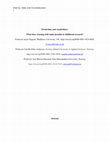
Reconceptualizing Educational Research Methodologies, 2022
Coronavirus perform its agency on childhood in the Capitalocene in new, troubling, and sometimes ... more Coronavirus perform its agency on childhood in the Capitalocene in new, troubling, and sometimes hopeful ways. Research-creation has compelled us to dwell upon how virusing-with makes attuning differently to the world possible. We contemplate how virusing-with as concept and method holds the potential to disrupt and reformulate ways to undertake research and ways to conceptualise the child. Inspired by Manning’s (2020) recent work in relation to the child of the wanderline, we explore how multiple wanderlines take shape and interweave through research processes. Through the curation of three threshold events we think-do qualitative research in ways that push ideas and practices about childhood in directions that attend to agentic relationalities between the human, non-human and more-than-human. We argue that practices of virusing-with in portal time provides space for coming-into-relations of differences (Manning, 2016a, p.11) as an ecology of practice that shapes how educational research might be conceptualised and practiced.

Arboreal methods bring embodied encounters in the forest, together with tales of the forest as co... more Arboreal methods bring embodied encounters in the forest, together with tales of the forest as commercial enterprise and the recent growth of the forest school movement. We pursue a critical, tentacular engagement with the forest and take seriously its potential to agitate familiarity and strangeness, wonder and fear, nature and culture. Arboreal methodologies are lively, unfurling, interwoven, and uncertain. From the forest floor in fictional Moominvalley (see Figures 1, 2), to a pine forest on an island in Sweden, to the 'thin green line' of north London, we re-encounter embodied becomings-with the forest to think and sense other ways to take life in the Plantationocene 1 seriously. Our inquiry involves walking, talking, story-telling, art-making and a slow, deep exploration of the temporalities, textures, and complexities of 'tree time' (Wohlleben, 2016). With this in mind we present our ideas diffractively, playing with and pushing against conventions of academic writing. Diffraction is a concept and practice put to work in posthumanism (see Osgood & Robinson, 2019); as a methodological approach diffractive analysis explores how material objects and processes can be understood through the effects created by their difference, rather than observing what these differences are. This accounts for the non-normative presentation of ideas in this chapter which are presented as unexpected quotes from Jansson (1945/2012), our own artwork, poetic interludes, QR codes and shifts in font and layout intended to jar the 1 Plantationocene is a term used by Haraway (2016) and Tsing (2015) as an extension to the Anthropocene (human waged devastation of planet earth). It notes the devastating transformation of diverse kinds of farms, pastures, and forests into extractive and enclosed plantations, relying on exploited, alienated, and usually spatially transported labour.
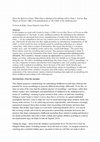
Children’s Culture Studies After Childhood. Springer., 2022
In this chapter we work with Ursula Le Guin's (1986) Carrier Bag Theory of Fiction to offer a rec... more In this chapter we work with Ursula Le Guin's (1986) Carrier Bag Theory of Fiction to offer a reconfiguration of 'the book' in early childhood contexts. By attending to the relational agencies that are generated from messy entanglements of reader-book-child-chair-cat-lice-mites…, we are compelled to feel our way round to arrive at other ideas about what books are, what books do and what else they might potentiate in contemporary imaginations of 'the child'. Le Guin retells the story of human origin by redefining technology as a cultural 'carrier bag' rather than a weapon of domination. She argues that the bag is a recipient, holder, story, sack-for holding words; and in turn, 'words hold things.' The carrier bag theory allows room for everything and everyone. This generous and generative mode of enquiry frees us from the limitations of the linear, heroic anthropocentric/phallogocentric (Braidotti, 2013) narrative. Instead, it opens up opportunities to explore stories with no happy-ever-after, embracing speculations about what else unfolds as we forage and gather along the way. We offer a scrabbling methodology like Anna Tsing's (2015) 'assemblage': in our case, fragments of stories and sketches from imaginative and 'real' reading experiences coalesce with a method of scrabbling 'down the back of the chair' (both literally and metaphorically). This arts-based, feminist methodology attunes to assemblages of odds and ends, hair and dust mites, children's literature and child readers, and facilitates a deep exploration of the intersectional, spatial, relational meanings that might tell us something else about childhood and reading in the Anthropocene.

Storying in Early Childhood Research & Practice: Posthuman & Autoethnographic Approaches, 2021
This paper pursues storytelling in the Anthropocene as a method of earthly survival and multispec... more This paper pursues storytelling in the Anthropocene as a method of earthly survival and multispecies flourishing from capitalist ruins. Storytelling emerged from (an accidental method of) walking-with during a global pandemic; the figure of the modern-day flâneuse is mobilised as a feminist praxis to investigate infected, entangled and affective relationalities between the human, non-human and more-than-human as they unfold in the daily tangles to emerge from lock-down life in the city. It is through the art of noticing (Tsing, 2015) and the arts of living on a damage planet (Tsing et al., 2017) that a commitment to engaging with the ordinary, mundane and habitual muddle, that the world is viewed, sensed and encountered through a different set of optics. The stories that are told about lichen, a dead pigeon, and a deadly virus are curated from a specific geopolitical moment where the early childhood workforce, as a highly gendered and classed group of 'essential' frontline workers, suffer disproportionately. Storytelling provides a means to attune to life in Anthropocene that emphasises precarity, indeterminacy and hope. It is only by recognising that trans-corporeality demands an ethical response-ability to all life forms (Alaimo, 2016) that we might find a means of earthly survival.

Reconceptualizing Educational Research Methodology, 2019
stARTing out
As we (the four guest editors) worked toward assembling the editorial introduction t... more stARTing out
As we (the four guest editors) worked toward assembling the editorial introduction to this Special Issue, we exchanged many emails, texts, Facebook prompts, Skype calls, and, when possible, met in coffee shops to work through our thinking. During one video call, we contemplated the fraught issue of how to introduce ourselves into the editorial, discussing various modes such as autobiography, figurations, poems, and artwork (see Figure 1). Figure 1. T(og)ethering (PhArt by Emma Renold, 2019).
We heatedly debated how to write collaboratively as a complex exercise in cutting-together-apart (Barad, 2003). We struggled with sharing and negotiating boundaries—questioning the meaning of introducing ourselves, to what end, and what would be response-able. Throughout this editing journey we have stayed with all of the “trouble” presented by our mixing and mingling with one another and working out our relationships toeach of the papers in this Special Issue, as we show, tell, and share in what follows.

Contemporary Issues in Early Childhood, 2019
Children’s access to certain knowledge, often deemed inappropriate for children by adults, has be... more Children’s access to certain knowledge, often deemed inappropriate for children by adults, has been at the core of many controversies in children’s early education. This is particularly the case in terms of the censorship associated with children’s access to what has been broadly viewed as ‘dif- ficult knowledge’ – bodies of knowledge pertaining to sexuality, death, war, poverty, and violence, for example. In some western countries, the discourse of childhood innocence has been a powerful mediator/regulator of children’s access to knowledge and has influenced how children are viewed as active citizens in their everyday lives (Robinson, 2013). However, it is now more widely accepted that children are competent, knowing beings in and of the world, readily taking up, pro- cessing and challenging messages about a raft of uncomfortable and inequitable realities, from global warming, to sexism, to racial intolerance, to class prejudice (Osgood et al., 2016). This view of children and childhood requires that approaches to pedagogy, policy and practice around diver- sity and difference in early childhood education attend to children as knowers and doers in the world (Osgood, 2012; Osgood and Robinson, 2019; Robinson and Jones Díaz, 2016).

Genealogy, 2020
This Special Issue acknowledges genealogy as a critical method and mode for tracing power-laden, ... more This Special Issue acknowledges genealogy as a critical method and mode for tracing power-laden, taken-for-granted assumptions about childhood, motherhood, family and community. Genealogy, as Foucault (1978, p. 139) notes, “operates on a field of entangled and confused parchments, on documents that have been scratched over and re-copied many times”. As such, genealogy provides a critical methodology which allows for a focus on the historical conditions that produce discourses, how they have been shaped in a given time and space, as well as the mechanisms of power that produce and sustain such discourses (Arribas-Ayllon and Walkerdine 2008, p. 91). Genealogy then, offers a framework that embeds the conceptualisation of things in history; allows irreducible singularities to be mapped; and ultimately, generates a kind of knowledge that radically challenges the modernist framings of studies into family, community, mothering and childhood. Such studies have too often been understood through universalist, modernist lenses in which they become dis-embedded from localised contexts and reinserted within generalisable categories that are articulated across progressively wider tracts of time and space (Foucault 1978). This Special Issue is concerned with presenting alternate ways to materialise concepts and practices that might offer a means to shift ideas about contemporary families, communities, motherhoods and childhoods in other directions. Following Haraway (2008, 2016), we argue that life in the Anthropocene demands a different logic, one that displaces old categorisations and theorisations and so invites an active re-thinking of what kin might be, mean and potentiate. It is not enough to attend to only humanist readings and tracings of what makes ‘family’ or ‘community’. There is an urgent need to recognise the complexity of our times; times that are shaped by material-semiotic entanglements, which have a great deal to tell us about how to co-exist and thrive, if only we are prepared to attune and listen. It is against this backdrop that this Special Issue seeks to intervene and contribute to thinking-otherwise about childhood, motherhood, family and community.

This paper attempts to reconfigure hegemonic framings of 'the academic conference' and thereby of... more This paper attempts to reconfigure hegemonic framings of 'the academic conference' and thereby offer a means to (re-)encounter the spatial, temporal and affective forces that conferences generate, differently. We are a geographically dispersed but multiply entangled group of academic researchers united by theoretical fault lines within our work that seek to ask what if (Haraway, 2016) and what else (Manning, 2016). This 'what if' and 'what else' thinking has manifested in experimental and subversive doings otherwise at a series of academic conferences. The storying practices presented in this paper were made possible by the vital materialism (Bennett, 2010) of a shared google.doc. It was within this virtual environment that we attempted to weave diffractive accounts of what conferencing otherwise produces. This writing experiment offers a series of speculative provocations and counter-provocations to ask what else does conferencing make possible. This article is an invitation to the reader to plunge in and wallow (Taylor, 2016) within the speculative accounts which ensue and to contemplate the possibilities of breaking free from sedimented ways of neoliberal conferencing. Introduction We are a collective of academics committed to pushing against the normative parameters and expectations of the neo-liberal conference. The twelve of us have, on various occasions and in different permutations, facilitated workshops, given performances, organised events and hosted conferences that have sought to disrupt and offer a means to 'conference otherwise'. We do this because conferences are difficult spaces in which academics are required to undertake considerable emotional, physical and academic labour in attempts to 'fit in' and perform the unspoken rules of the conferencing game which tends to privilege the white, western, middle-class unencumbered male academic. Together our work has been shaped by a range of philosophers and theorists including Haraway, Barad, Bennett and Deleuze & Guattari amongst others. We recognise that drawing upon concepts and practices that are broadly defined as post-humanist or new materialist presents tensions and incongruences; however, our aim is to work with the potential that theoretical pluralism can bring to our shared project of 'conferencing otherwise'. Collectively, we are committed to a new materialism that is feminist (Osgood, 2019; Taylor, 2019), and our project is a political one that seeks to expose, problematise and challenge injustices, inequalities and prejudices that are embedded within and routinely play out in conferencing.
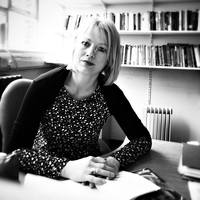

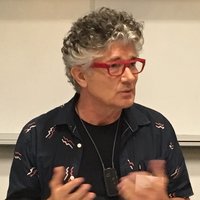
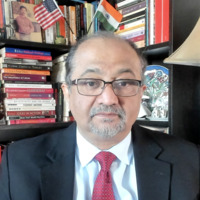
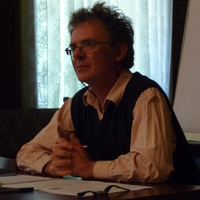

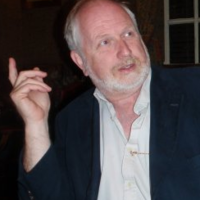



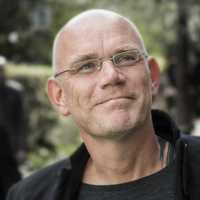
Uploads
Journal Articles by Jayne Osgood
(Stewart, 2011, p. 445). Trailing ends coalesce here across a series of mesh/
works—knots of images chronicling and tangling a smattering of vital, if ordinary, threads. Our hope is that these threads, these trailing ends, continue searching for ecological possibilities in the field of art education - specifically, possibilities that are rooted in attention, rather than based upon place (Hofsess, 2021).
As we (the four guest editors) worked toward assembling the editorial introduction to this Special Issue, we exchanged many emails, texts, Facebook prompts, Skype calls, and, when possible, met in coffee shops to work through our thinking. During one video call, we contemplated the fraught issue of how to introduce ourselves into the editorial, discussing various modes such as autobiography, figurations, poems, and artwork (see Figure 1). Figure 1. T(og)ethering (PhArt by Emma Renold, 2019).
We heatedly debated how to write collaboratively as a complex exercise in cutting-together-apart (Barad, 2003). We struggled with sharing and negotiating boundaries—questioning the meaning of introducing ourselves, to what end, and what would be response-able. Throughout this editing journey we have stayed with all of the “trouble” presented by our mixing and mingling with one another and working out our relationships toeach of the papers in this Special Issue, as we show, tell, and share in what follows.
(Stewart, 2011, p. 445). Trailing ends coalesce here across a series of mesh/
works—knots of images chronicling and tangling a smattering of vital, if ordinary, threads. Our hope is that these threads, these trailing ends, continue searching for ecological possibilities in the field of art education - specifically, possibilities that are rooted in attention, rather than based upon place (Hofsess, 2021).
As we (the four guest editors) worked toward assembling the editorial introduction to this Special Issue, we exchanged many emails, texts, Facebook prompts, Skype calls, and, when possible, met in coffee shops to work through our thinking. During one video call, we contemplated the fraught issue of how to introduce ourselves into the editorial, discussing various modes such as autobiography, figurations, poems, and artwork (see Figure 1). Figure 1. T(og)ethering (PhArt by Emma Renold, 2019).
We heatedly debated how to write collaboratively as a complex exercise in cutting-together-apart (Barad, 2003). We struggled with sharing and negotiating boundaries—questioning the meaning of introducing ourselves, to what end, and what would be response-able. Throughout this editing journey we have stayed with all of the “trouble” presented by our mixing and mingling with one another and working out our relationships toeach of the papers in this Special Issue, as we show, tell, and share in what follows.
an understanding of the current nature of parental
engagement in early years music-making
projects, levels of parental engagement and
participation, challenges encountered by
practitioners in engaging particular groups of
parents; and effective strategies used to enhance
the engagement of ‘hard to reach’ groups within
early years music-making.
In this interview, Jayne Osgood discussed with us the impact of certain theories not only on her thinking and approaches to research, but also how they have transformed the way she lives her life. This observation really resonated with us. The more we engage with postman and new materialisms literature, the better attuned we have become to the everyday and the things we encounter. These things are often small, like the glitter that Jayne investigates in her research. Such matter is to diminished by its size - in fact, as Jayne shows in this interview, small things come to matter in significant ways - politically, environmentally, etc - and need to be taken seriously because they have they have ethical implications for human and more-than-human others. We also really appreciated Jayne's discussion of writing within postman and new materialist approaches, and how, despite calls for experimentation, we must keep in mind what experimentation does in our work, and for those we do research with. W discuss some of her recent writing in Feminists Researching Gendered Childhoods (Osgood & Robinson, 2019) in which she experiments with different forms of writing, and the opportunities that this has opened up for her. As Jayne suggests, research and writing is not about having answers, but is rather about becoming open to questioning and making connections that we may not have considered or noticed before.